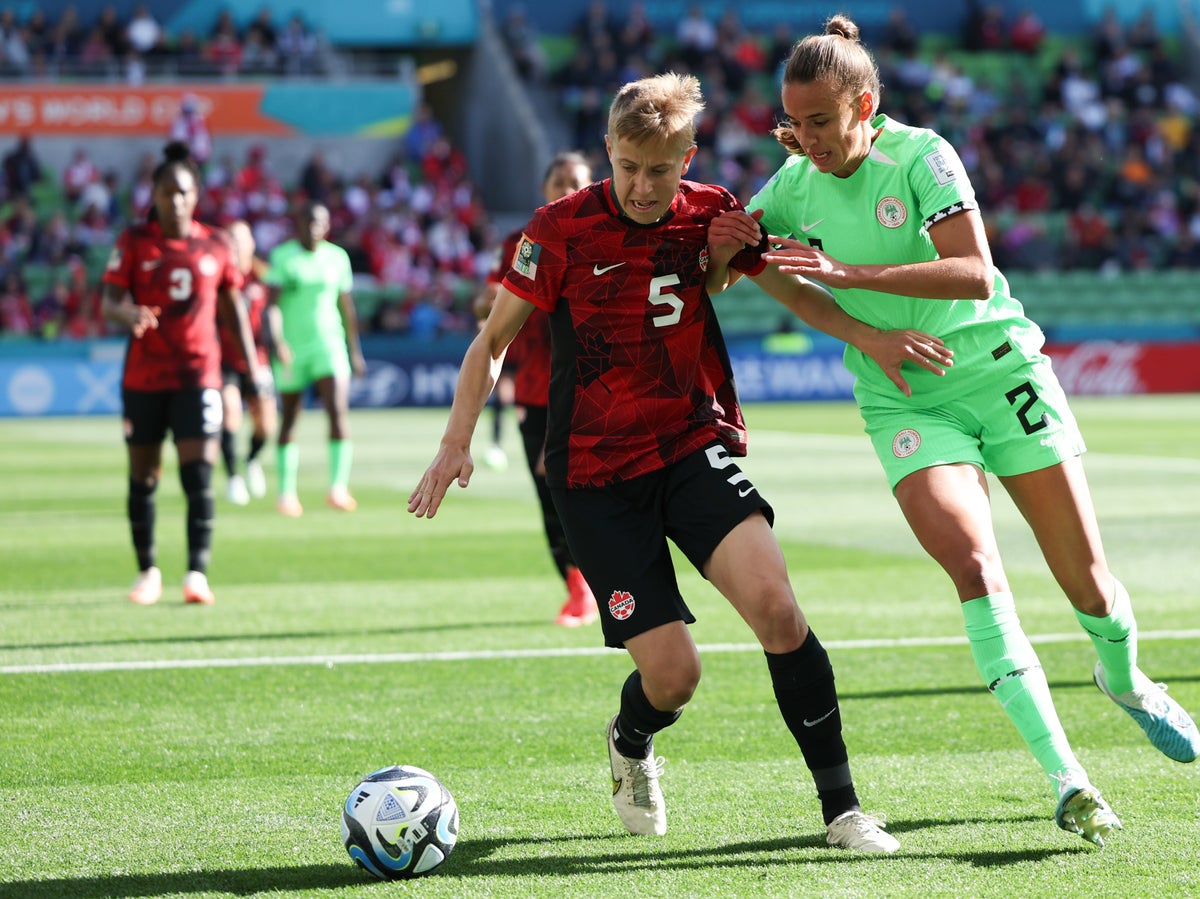
Canada midfielder Quinn made history when they became the first transgender and non-binary person to appear at either a men’s or women’s World Cup, playing 90 minutes in the 0-0 draw with Nigeria in Melbourne last week.
The Ontario native, 27, is already a gold medallist for their country, part of the side that triumphed at the Covid-delayed Tokyo Olympics in summer 2021 and has designs on going all the way in Australia and New Zealand too.
Hailing from a sporting family – Quinn’s father and mother played college rugby and basketball respectively – the midfielder quickly took to football as a child, rejecting all other after-school pursuits in favour of the beautiful game.
They played at youth level for North Toronto, Richmond Hill and Erin Mills Eagles and briefly for Toronto Lady Lynx in 2013 before heading due south and enrolling as a biology major at prestigious Duke University in Durham, North Carolina.
There, Quinn played for the Duke Blue Devils, making 69 appearances and scoring four between 2013 and 2017.
Turning professional after graduation, they signed first for Washington Spirit in 2018 before a short-lived stint with Paris FC in France followed.
Quinn subsequently transferred to OL Reign in Seattle in 2019, where they have played alongside US Women’s National Team greats Rose Lavelle and Megan Rapinoe ever since – outside of a brief loan spell with Swedish side Vittsjo GIK in 2020.
For the Canadian national team, Quinn made their debut for the under-17s in 2012 and subsequently played for the under-20 and under-23 sides before graduating to the senior squad in 2014, subsequently picking up 89 caps and scoring five, as well as a bronze medal at the 2016 Olympics in Rio de Janeiro.
Quinn became known by the mononym in 2020 after coming out as transgender and non-binary, opting for gender-neutral pronouns. They were granted permission to continue playing professional women’s football based on a sex-assigned-at-birth basis.
Quinn in training with Canada— (Hannah Mckay/Reuters)
“I want to be a visible figure for young trans folks or people questioning their gender, people exploring their gender,” Quinn has said of their decision to come out.
“Because unfortunately when I was growing up, and even going through that process of figuring out myself in college, I didn’t have those people in the public sphere to look up to.
Get all the latest Women’s World Cup odds here
“There are several trans athletes and several trans people in media and politics, but I just think those faces are not common enough.
“I want to be a visible trans person succeeding in my job, so that younger trans folks could see that they did have an avenue to go and that they would have a future and a career ahead of them.”







